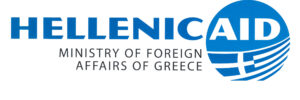In September 2015, international leaders agreed on a new global development agenda comprising 17 Sustainable Development Goals (SDGs) and 169 targets to be achieved by 2030: “Transforming our World: The 2030 Agenda for Sustainable Development”.
This report aims to help development co-operation providers better grasp the implications of the 2030 Agenda for their sector strategies, so that they can effectively support the SDGs by choosing the right instruments, channels and financing approaches. It provides them with an unprecedented, comprehensive picture of official development finance (ODF) allocations by sector by bringing together data for the period 2012-2016 on sector financing by country, type of instrument and delivery channel. The analysis includes not only official development assistance (ODA), but also other official flows (OOF) and resources mobilised from the private sector by official development interventions.
The report looks into potential data gaps and the challenge of matching the traditional typologies of donors’ investments by sector with the expected multisector outcomes framed by the SDGs. It also reviews the sector composition of financial flows to specific income groups and countries most in need, such as least developed countries (LDC) and small island developing states (SIDS). Finally, the report takes stock of the use of specific approaches, such as sector budget support or pooled funding.
The report’s main conclusions are:
– Overall, ODF increased by 35% in real terms between 2012 and 2016, benefiting all sectors in developing countries.
– Development co-operation providers mobilise private finance only in a handful of sectors
– All providers of development co-operation should make their sector financing information more detailed, more comprehensive and more comparable to respond to the new, multifaceted SDG framework.
– Providers of development co-operation have to map the impact of each sector intervention against each goal, align with the SDG targets defined by each partner country, and appropriately target their interventions.
– Providers of development co-operation need to look more closely at the specific challenges in each country, especially for countries most in need.
– Adopting a smart, sector approach to transition finance is essential, but demands new research.
– The use of debt instruments to support the commercial and infrastructure sectors is growing, calling for increased attention to fiscal sustainability in countries most in need.
– Channels of delivery may vary, depending on sector priorities and strategies, development effectiveness and good donorship need to guide development partners’ efforts.
More information: http://www.oecd.org/development/sector-financing-in-the-sdg-era-9789264307711-en.htm
